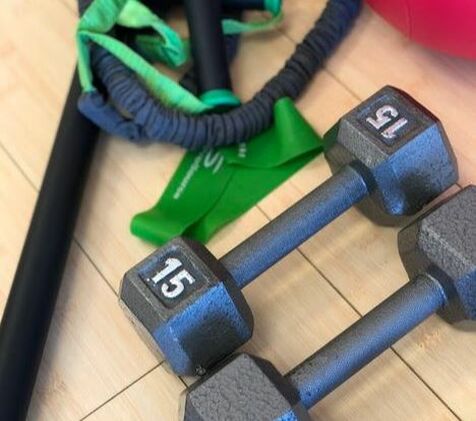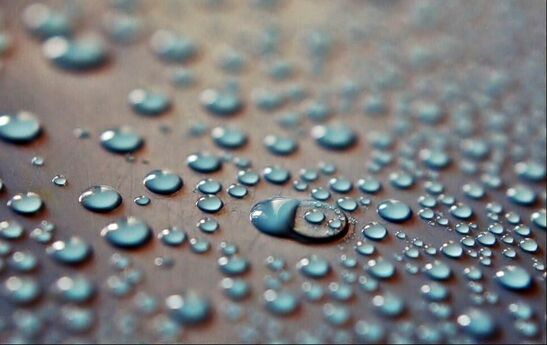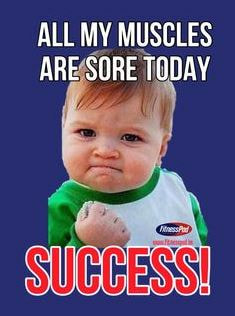|
We all have certain beliefs when it comes to fitness and those beliefs dictate what we do and how we feel about the effectiveness of our workouts. I see several myths perpetuated even by fitness professionals. So, let’s take a look at the first two, shall we? Sweatier is Better “I was sooo sweaty. What a great workout!” Many of us judge the effectiveness of our workouts by how much we sweat. I love a good sweat session as much as anyone else but the truth is that how much you sweat doesn't necessarily correlate with the intensity of the session or how many calories you burn. When body temperature rises, you secrete sweat, and the evaporation of moisture from your skin helps you cool down. Many factors play a role in how much you sweat. These include: gender (generally men sweat>women), age (younger>older), genetics, environment including temperature and humidity, weight/size (larger people tend to generate more heat), hydration and fitness level. The type and duration of your workout can also affect sweat rates. This is why "Sweat Challenges" may be all in good fun, but the winner didn't necessarily work harder than everyone else. The take-away here is that a low-sweat workout doesn’t mean you aren’t working hard enough or that it isn’t effective. It could be that your sweat is evaporating quickly due to the environment or maybe you just don't sweat as much as others. I can do the same workout on different days and have vastly different “sweat outcomes” depending on how much water I’ve had prior and the humidity and temperature of the environment. We are all better served to pay attention to our perceived exertion during our sessions and work at the level appropriate to our goals and preferences. Sore Today, Strong Tomorrow?
“I didn’t get a good workout; I am not sore at all.” OR… “I had the best workout yesterday! I am so sore I can barely move!” Much like sweat during a workout, it’s a common belief that muscle soreness in the days after is an indicator of a quality workout. That is, the more sore you get from your session, the better it was. My clients often report that they enjoy the feeling of muscle soreness to an extent and I do as well. But the truth is that DOMS is not necessarily an indication of pending results or the quality of that workout. Delayed onset muscle soreness (DOMS) typically starts 1 to 2 days post-workout and can last up to five days. It was once believed that lactic acid is the main cause of DOMS. Now, it is believed that microscopic tears in the muscle and connective tissue results in inflammation which causes pain (soreness). You may experience noticeable soreness when you complete novel exercises (exercises that are new to you), increase the range of motion, load or volume of an exercise, or focus on eccentrics. Eccentric refers to the muscle lengthening portion of an exercise... for example, as you lower the weights during a bicep curl. Some people rarely experience soreness and others are continually sore. Many factors play a role in the degree of soreness an individual will experience including genetics, exercise history, and nutrition/recovery practices. Soreness is not essential to receiving the benefits of exercise. Little evidence exists to show the correlation between muscle soreness and muscle growth. It may play a role in muscle hypertrophy but it isn't a simple dose-response relationship. Should you seek soreness or not? Moderate soreness can be a positive reminder of the work you put in a day or two before. If you enjoy the feeling and it motivates you, nothing wrong with seeking it. On the flip side, make sure you don't put too much emphasis on it or get discouraged when you do not experience it. If you dislike being sore, approach new exercises at lower loads or volume and build up slowly. As with all things, too much soreness can be detrimental. If you are so sore that you avoid movement, your overall energy expenditure will be lowered. If your goal is weight loss, this is going to be detrimental to that goal. (Google: Non-exercise activity thermogenesis or NEAT). Even if weight loss isn't your goal, not moving much because you are in pain isn't good for anyone! In addition, if you are constantly extremely sore, you may not be allowing adequate recovery which is essential to gaining strength and improving fitness. If you ever find yourself more sore than you'd care to be, try low to moderate activity to increase blood flow to damaged tissues. Foam-rolling or other massage techniques can also be beneficial. Ensure you are drinking adequate water and you may even consider anti-inflammatory foods to support recovery Watermelon juice may be worth a try! Next time, we’ll take a look at a couple of other fitness myths including “feel the burn” and exercise “make-up” sessions.
0 Comments
Leave a Reply. |
Archives
June 2023
Categories
All
|



 RSS Feed
RSS Feed